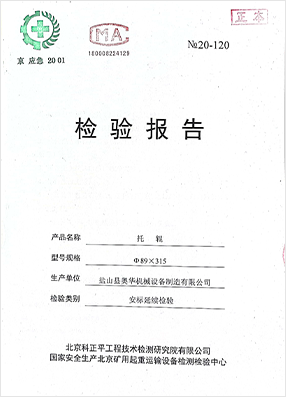 Afrikaans
Afrikaans  Albanian
Albanian  Amharic
Amharic  Arabic
Arabic  Armenian
Armenian  Azerbaijani
Azerbaijani  Basque
Basque  Belarusian
Belarusian  Bengali
Bengali  Bosnian
Bosnian  Bulgarian
Bulgarian  Catalan
Catalan  Cebuano
Cebuano  Corsican
Corsican  Croatian
Croatian  Czech
Czech  Danish
Danish  Dutch
Dutch  English
English  Esperanto
Esperanto  Estonian
Estonian  Finnish
Finnish  French
French  Frisian
Frisian  Galician
Galician  Georgian
Georgian  German
German  Greek
Greek  Gujarati
Gujarati  Haitian Creole
Haitian Creole  hausa
hausa  hawaiian
hawaiian  Hebrew
Hebrew  Hindi
Hindi  Miao
Miao  Hungarian
Hungarian  Icelandic
Icelandic  igbo
igbo  Indonesian
Indonesian  irish
irish  Italian
Italian  Japanese
Japanese  Javanese
Javanese  Kannada
Kannada  kazakh
kazakh  Khmer
Khmer  Rwandese
Rwandese  Korean
Korean  Kurdish
Kurdish  Kyrgyz
Kyrgyz  Lao
Lao  Latin
Latin  Latvian
Latvian  Lithuanian
Lithuanian  Luxembourgish
Luxembourgish  Macedonian
Macedonian  Malgashi
Malgashi  Malay
Malay  Malayalam
Malayalam  Maltese
Maltese  Maori
Maori  Marathi
Marathi  Mongolian
Mongolian  Myanmar
Myanmar  Nepali
Nepali  Norwegian
Norwegian  Norwegian
Norwegian  Occitan
Occitan  Pashto
Pashto  Persian
Persian  Polish
Polish  Portuguese
Portuguese  Punjabi
Punjabi  Romanian
Romanian  Russian
Russian  Samoan
Samoan  Scottish Gaelic
Scottish Gaelic  Serbian
Serbian  Sesotho
Sesotho  Shona
Shona  Sindhi
Sindhi  Sinhala
Sinhala  Slovak
Slovak  Slovenian
Slovenian  Somali
Somali  Spanish
Spanish  Sundanese
Sundanese  Swahili
Swahili  Swedish
Swedish  Tagalog
Tagalog  Tajik
Tajik  Tamil
Tamil  Tatar
Tatar  Telugu
Telugu  Thai
Thai  Turkish
Turkish  Turkmen
Turkmen  Ukrainian
Ukrainian  Urdu
Urdu  Uighur
Uighur  Uzbek
Uzbek  Vietnamese
Vietnamese  Welsh
Welsh  Bantu
Bantu  Yiddish
Yiddish  Yoruba
Yoruba  Zulu
Zulu Innovative Solutions for Self-Cleaning Tail Pulleys in Material Handling Systems and Their Benefits
The Importance of Self-Cleaning Tail Pulley in Conveyor Systems
In the world of material handling and conveyor systems, the efficiency of operations is paramount. One crucial component that plays a significant role in maintaining this efficiency is the tail pulley, specifically when it is designed with self-cleaning capabilities. The self-cleaning tail pulley not only enhances the overall performance of conveyor systems but also minimizes operational downtime and maintenance costs.
Understanding the Tail Pulley
The tail pulley is a critical component at the end of a conveyor belt. It is responsible for tensioning the belt and supporting its movement, which in turn affects the overall performance of the conveyor. Traditional tail pulleys can often accumulate material, debris, and other contaminants, leading to a host of operational issues.
When these materials build up, they can create excessive wear on the belt, misalign rollers, and ultimately result in belt slippage or mismanagement of the conveyed materials. Consequently, this can lead to increased maintenance requirements and operational inefficiencies, causing costly downtime during production.
What is a Self-Cleaning Tail Pulley?
A self-cleaning tail pulley incorporates innovative design features that prevent the accumulation of materials around or on the pulley surface. Typically, these pulleys are equipped with specific grooves, plates, or other geometrical modifications that facilitate the shedding of material as the conveyor operates. This ensures that sticky materials, such as mud, clay, or other particulates, do not stay lodged on the pulley, thereby reducing the likelihood of blockage and keeping the conveyor line running smoothly.
Benefits of Self-Cleaning Tail Pulley
self cleaning tail pulley

1. Reduced Maintenance One of the primary advantages of self-cleaning tail pulleys is a significant reduction in maintenance efforts. With the ability to shed material effectively, operators spend less time on manual cleaning processes. This not only saves labor costs but also allows maintenance teams to focus on other essential tasks.
2. Minimized Downtime Effective self-cleaning mechanisms lead to fewer disruptions in conveyor operations. When pulleys remain clean, there is a lower risk of system failures, which translates into uninterrupted production cycles. Consequently, companies can enhance their productivity and profitability.
3. Extended Equipment Lifespan By preventing material buildup, self-cleaning tail pulleys reduce wear and tear on both the pulleys and the conveyor belts. This prolongs the lifespan of the equipment, minimizing the need for frequent replacements and reducing overall operational costs.
4. Improved Safety Clean and well-maintained machinery operates more safely. Reducing slip and misalignment events contributes to a safer working environment, thereby protecting employees and reducing the risk of accidents.
5. Enhanced Performance The continuous operation of clean tail pulleys ensures that the conveyor system functions at optimal levels. This directly contributes to the efficient transportation of materials, ultimately enhancing throughput.
Conclusion
In conclusion, self-cleaning tail pulleys are an essential innovation in the realm of conveyor technology. The ability to self-maintain reduces operational costs, extends the longevity of equipment, improves safety, and enhances overall performance. As industries continue to evolve and seek greater efficiency, the adoption of self-cleaning tail pulleys is likely to increase, reflecting a growing recognition of their essential role in modern material handling systems. Companies are encouraged to invest in these innovative solutions to not only streamline their operations but also to secure a competitive edge in their respective markets.
-
Revolutionizing Conveyor Reliability with Advanced Rubber Lagging PulleysNewsJul.22,2025
-
Powering Precision and Durability with Expert Manufacturers of Conveyor ComponentsNewsJul.22,2025
-
Optimizing Conveyor Systems with Advanced Conveyor AccessoriesNewsJul.22,2025
-
Maximize Conveyor Efficiency with Quality Conveyor Idler PulleysNewsJul.22,2025
-
Future-Proof Your Conveyor System with High-Performance Polyurethane RollerNewsJul.22,2025
-
Driving Efficiency Forward with Quality Idlers and RollersNewsJul.22,2025





























